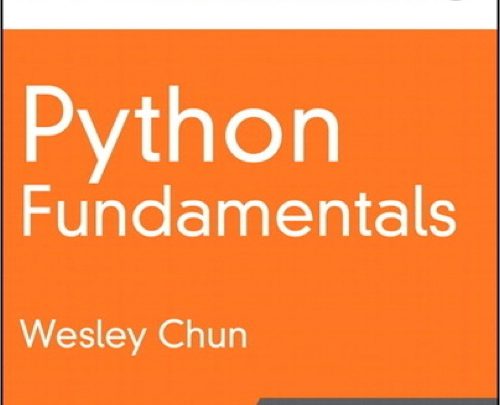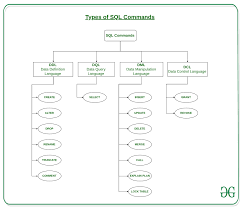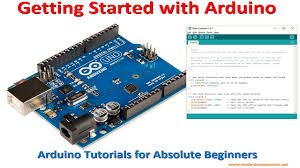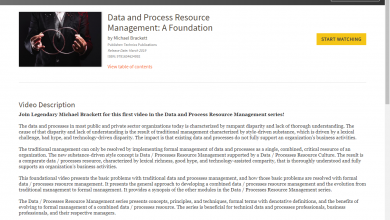Python Fundamentals

Python Fundamentals LiveLessons with Paul Deitel is a code-oriented presentation of Python—one of the world’s most popular and fastest growing languages. In the context of scores of real-world code examples ranging from individual snippets to complete scripts, Paul will demonstrate coding with the interactive IPython interpreter and Jupyter Notebooks. You’ll quickly become familiar with the Python language, its popular programming idioms, key Python Standard Library modules and several popular open-source libraries. In the Intro to Data Science videos, Paul lays the groundwork for later lessons in which he’ll introduce some of today’s most compelling, leading-edge computing technologies, including natural language processing, data mining Twitter® for sentiment analysis, cognitive computing with IBM® Watson™, supervised machine learning with classification and regression, unsupervised machine learning with clustering, computer vision through deep learning and convolutional neural networks, sentiment analysis through deep learning with recurrent neural networks, big data with Hadoop®, Spark™ streaming, NoSQL databases and the Internet of Things.
About the Instructor
Paul J. Deitel, CEO and Chief Technical Officer of Deitel & Associates, Inc., is a graduate of MIT, where he studied Information Technology. He holds the Sun (now Oracle) Certified Java Programmer and Certified Java Developer certifications, and is an Oracle Java Champion. Through Deitel & Associates, Inc., he has delivered Java, C#, Visual Basic, C++, C and Internet programming courses to industry clients, including Cisco, IBM, Sun Micro systems, Dell, Siemens, Lucent Technologies, Fidelity, NASA at the Kennedy Space Center, the National Severe Storm Laboratory, White Sands Missile Range, Rogue Wave Software, Boeing, SunGard Higher Education, Stratus, Cambridge Technology Partners, One Wave, Hyperion Software, Adra Systems, Entergy, CableData Systems, Nortel Networks, Puma, iRobot, Invensys and many more. He and his co-author, Dr. Harvey M. Deitel, are the world’s best-selling programming-language textbook/professional book authors.
Skill Level
Beginner-to-Intermediate
What you Will Learn in Part I
- Before You Begin—Configure your system for Python, obtain the code examples, Python package managers, Paul’s contact info
- Lesson 1—Test-Drives: Using IPython and Jupyter Notebooks—Work with snippets and scripts in the context of IPython and Jupyter Notebooks
- Lesson 2—Intro to Python Programming—Variables, types, operators, strings, I/O, decisions, objects and dynamic typing
- Lesson 3—Control Statements—if, if…else, if…elif…else, for, while, break, continue, augmented assignments, boolean operators, intro to lists
- Lesson 4—Functions—Custom function definitions, importing libraries, simulation with random-number generation, scope, default parameter values, keyword arguments, arbitrary argument lists, methods, intro to tuples, intro to functional-style programming
What you will learn in Part II:
- Lesson 5—Sequences: Lists and Tuples—Create, initialize and access the elements of lists and tuples; sort and search lists, and search tuples; pass lists and tuples to functions and methods; list methods; functional-style programming (lambdas, filter, map, reduce, list comprehensions, generator expressions, 2D lists); static visualization with the Seaborn and Matplotlib visualization libraries.
- Lesson 6—Dictionaries and Sets—Dictionaries of key—value pairs; sets of unique values; iterating through keys, values and key—value pairs; adding, removing and updating key—value pairs; dictionary and set comparison operators; set operators and methods; operators in and not in for membership testing; mutable set operations; dictionary and set comprehensions; dynamic visualization with the Seaborn and Matplotlib visualization libraries.
- Lesson 7—Array-Oriented Programming with NumPy—numpy module’s high-performance ndarrays; how ndarrays differ from lists; comparing list vs. ndarrayperformance with the IPython %timeit magic; one-dimensional and multidimensionalndarrays; common ndarray manipulations; introduction to the pandas data manipulation library; one-dimensional Series and two-dimensional DataFrames; custom Series and DataFrame indices; basic descriptive statistics for data in aSeries and a DataFrame; customizing pandas output formatting.
What you will learn in Part III:
- Lesson 8—Strings: A Deeper Look—String methods; string formatting; concatenating and repeating strings; stripping whitespace; string comparisons; search strings for substrings and replacing substrings; tokenizing strings; regular expressions for pattern matching, replacing substrings and validating data; manipulating data in pandas.
- Lesson 9—Files and Exceptions—Text-file processing; serializing objects into the JSON with the json module; with statement for avoiding “resource leaks”; exception handling; try…except statement; else clause; executing code when no exceptions occur in a try suite; finally clause; raise exceptions; more details on tracebacks; stack unwinding; CSV file processing via the csv module; loading and manipulating CSV files in pandas.
- Lesson 10—Object-Oriented Programming—Custom classes; controlling access to attributes; properties for data access; simulating “private” attributes; Python special methods for customizing string representations; inheritance, duck typing and polymorphism; class object; Python special methods for overloading operators; named tuples; Python 3.7 data classes; unit testing with doctest; namespaces and how they affect scope; Introduction to time series and simple linear regression.
What you will learn in Part IV:
- Lesson 11—Natural Language Processing (NLP)—Install and use the TextBlob, NLTK, Textatistic and spaCy NLP libraries;, tokenize text into words and sentences; parts-of-speech tagging (noun, verb, etc.); sentiment analysis (positive, negative or neutral); detect the language of text; translate between languages; get word roots via stemming and lemmatization; spell checking and correction; word definitions, synonyms and antonyms; remove stop words from text; create word-cloud visualizations; determine text readability.
- Lesson 12—Data Mining Twitter®—Access tweets and other information on Twitter with Tweepy‚Äîa popular Python Twitter API client; search past tweets with the Twitter Search API; sample the live tweet stream with the Twitter Streaming API; work with tweet object meta data; use NLP techniques to clean and preprocess tweets for analysis; perform sentiment analysis on tweets; spot trending topics with Twitter’s Trends API; map tweets using folium and OpenStreetMap.
- Lesson 13—IBM Watson® and Cognitive Computing—Intro to Watson and its free Lite tier services; demos of several Watson services; registering for an IBM Cloud account; set up and get credentials for Watson services; install the Watson Developer Cloud Python SDK; build a Traveler’s companion language translator app that mashes up the Watson Speech to Text, Language Translator and Text to Speech services.
Screenshot Tutorials/Courses
Download Free Tutorial Python Fundamentals
https://user.mshare.io/file/hSyZepN
https://1fichier.com/?ls93l0uvtob2go46oqh3
https://drive.google.com/a/vimaru.vn/file/d/1iaaq-tvqrUuyivod6hmld_jAUYOF7St-/view?usp=sharing
https://drive.google.com/a/vimaru.vn/file/d/1vuPcIhmJExAMZjKfdCYD6BRNk7JWBlFH/view?usp=sharing
https://uptobox.com/lqcradoj6ovs



